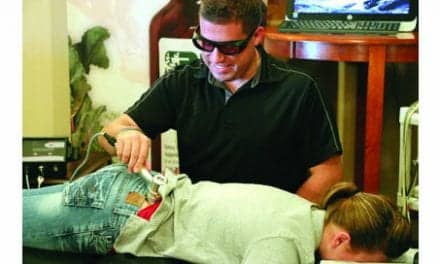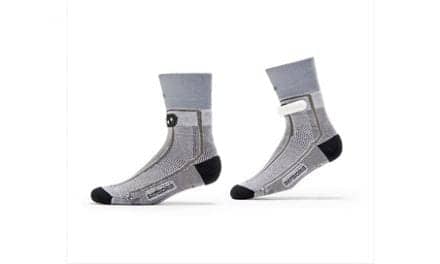Individual variation in the shape and structure of the Achilles tendon may influence one’s susceptibility to injury later in life, according to a study published in eLife.
Studying individual Achilles tendon shape (or “morphology”) could help with identifying patients at risk of injury and designing new, potentially personalized approaches for treating and preventing Achilles tendinopathy and similar conditions, researchers suggest in a media release.
The Achilles tendon is the tissue that links the calf muscles to the heel bone. Its unique structure, which combines three smaller sub-tendons, increases movement efficiency by allowing individual control from connected muscles. For this control to occur, the sub-tendons must work together and allow a certain degree of sliding between them. But the ability of the sub-tendons to slide decreases with age, possibly accounting for the increased frequency of injury sometimes seen in later life.
“Each sub-tendon should be seen as an individual working unit within the whole Achilles tendon to fully understand how force is distributed within the tendon. But current medical imaging methods don’t allow us to accurately visualize the borders of the sub-tendons in living people. This means the relationship between sub-tendon morphology, mechanical behavior and injury risk is still unclear.”
— lead author Nai-Hao Yin, a PhD student at the UCL Institute of Orthopaedics and Musculoskeletal Science, London UK
Address the Gap
To help address this gap, Yin and colleagues began by studying five human Achilles tendon specimens, from two males and three females. They performed mechanical tests on the sub-tendons of the specimens to compare their differing mechanical properties. Next, they recorded the morphology of the sub-tendons of an additional three specimens, from two males, aged 54 and 55 years old, and one female, aged 14, which were selected to represent a diverse range of individual differences in tendon morphology.
“Our experiments showed distinct mechanical properties in the sub-tendons in keeping with their mechanical demands. We identified considerable variation in the orientation of the sub-tendons from different individuals.”
— Nai-Hao Yin
The team then generated computer models using the data gained from their experiments. They applied a simulation technique to explore how different sliding properties affect sub-tendon movement and distribution of force within the different models. They were especially interested in the soleus muscle-tendon junction, as this location is widely used to measure tendon mechanical properties.
Reflect Age-Related Decline?
Next, they explored whether the results of their modeling experiments would reflect age-related decline in sub-tendon sliding in people. They recruited two groups of study participants: a group of seven older participants, aged 52-67 years old, and a younger group of nine participants, aged 20-29 years old. They applied electrical stimulation to the participants’ calf muscles and recorded the changes that occurred in the junction. The older group of participants showed less sliding compared to the younger group, reflecting the same trend as the modeling result when the team studied the soleus sub-tendon in isolation.
“Our work shows that the mechanical behavior of the Achilles tendon is highly complex and affected by a combination of factors, including sub-tendon mechanical properties and morphology, and age-related changes in their capacity for sliding. It also suggests that certain tendon morphologies may be more susceptible to injury in later life.
“We hope our findings will pave the way for further research on how these factors can affect sub-tendons differently among individuals, and ultimately lead to new injury treatment and prevention strategies.”
— senior author Helen Birch, Professor of Skeletal Tissue Dynamics at the UCL Institute of Orthopaedics and Musculoskeletal Science
[Source(s): eLife, EurekAlert]
Related Content:
HSS Awarded Grant to Study Blood Flow Restriction Therapy After Achilles Tendon Repair
Literature Review Explores Surgery or Nonsurgical Bracing for an Achilles Tendon Tear
Achilles Tendon Ruptures Are Common, But Often Misdiagnosed, Per Study





